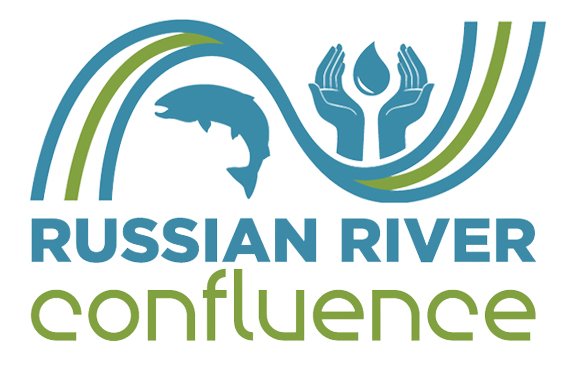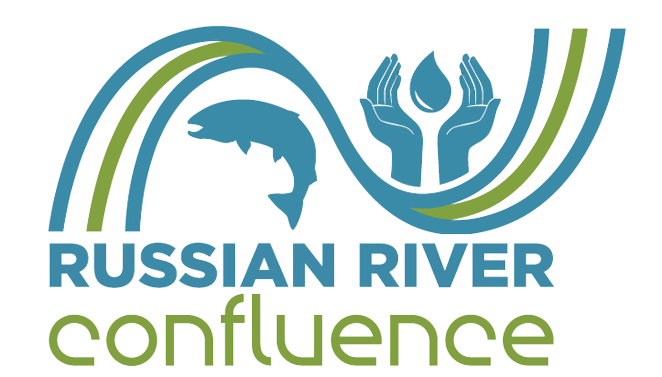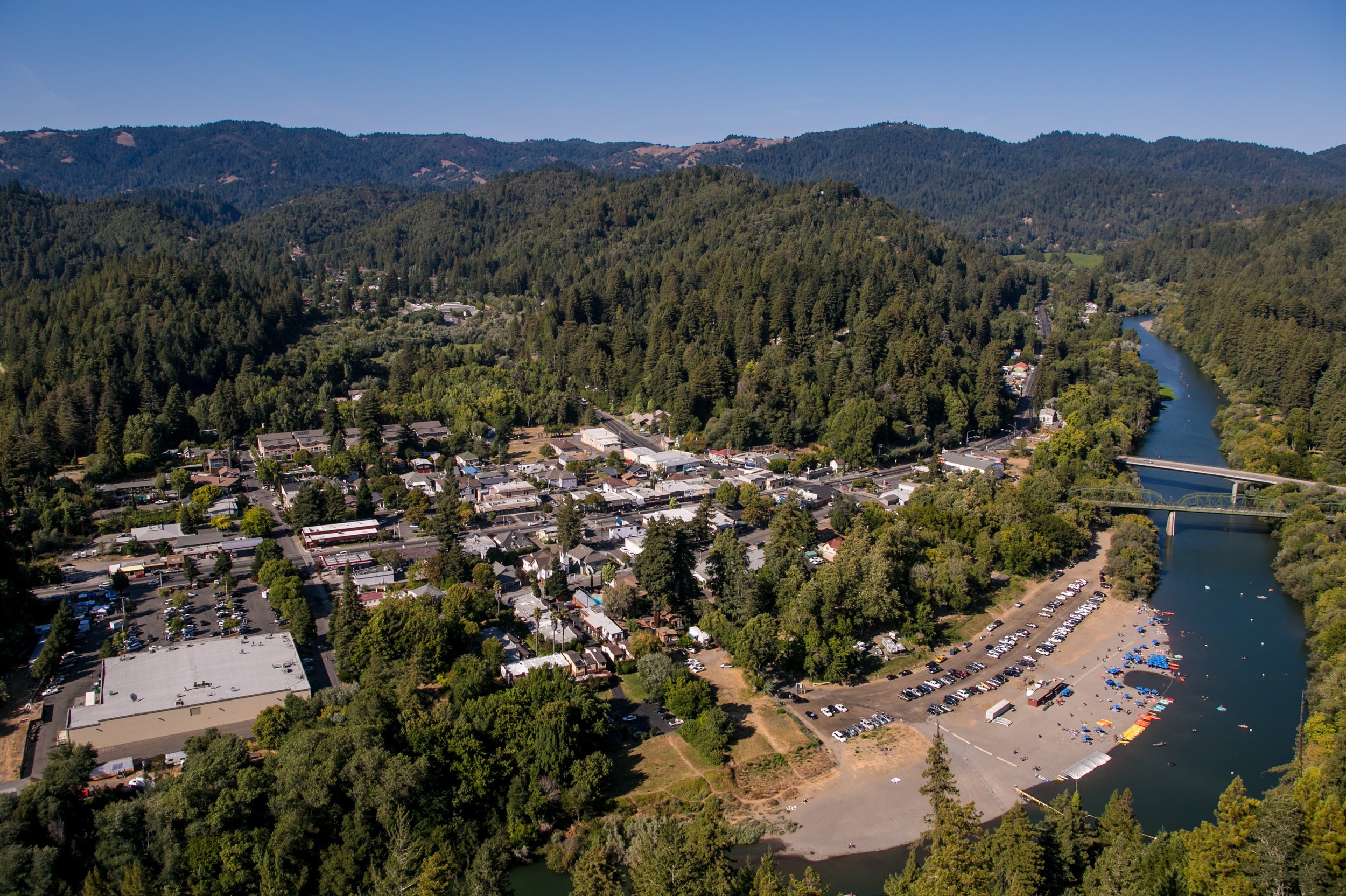FROM MENDOCINO HEADWATERS TO JENNER
The Russian River
The Russian River flows 110 miles from its headwaters in the Mayacama Mountains in Mendocino County to the large estuary and beaches at Jenner in Sonoma County.
It passes through oak and Douglas fir woodlands, valleys filled with orchards and vineyards, redwood forests, and the gentle hills of the coastal grasslands before reaching the ocean. The tributaries of the Russian River drain lands are as varied as the Geysers’ geothermal fields, the urban areas of the Santa Rosa plain, and the wildlife-rich wetlands of the Laguna de Santa Rosa. The watershed, made up of approximately 238 streams and creeks, provides water to over 600,000 people in Mendocino, Sonoma, and Marin counties. Its world-class wineries, fishing, canoeing, and accessible beauty make it a major recreation destination for ~1 million visitors every year.
The River Statistics
VITAL RESOURCE
Provides water to more than 600,000 residents.
Supports recreation to almost 1 million visitors a year and provides habitat for wildlife. The river is critical to the region’s agricultural sector.
MILES/SQ MILES
Approximately 110 miles long/Approximately 1,500 square miles
STREAMS & CREEKS
There are approximately 238 streams and creeks in the watershed.
FISH SPECIES/WILDLIFE & PLANTS
There are over 63 different species of fish in the watershed and countless plants and wildlife. See more information within the Watershed Ecology section below.
The Russian River Watershed
A RICH & DIVERSE REGION
The Russian River watershed resides on the ancestral and unceded lands of the Pomo, Miwok and Wappo Native American tribes who continue to fight for their spiritual and cultural connections to the River and land. You can find out what native lands you reside on at native-land.ca.
- Russian Riverkeeper
RUSSIAN RIVER HUMAN HISTORY
First Inhabitants
The Kashia Pomo and Coast Miwok tribes were the first inhabitants of the Russian River area, estimated to have resided in the watershed as early as 5000 BCE.
Russian Roots
Russian people from Sitka, Alaska, settled in the coastal area, founding Fort Ross in 1811 but leaving by mid-century. After 1842, Americans began settling in the area as a result of the Bear Flag Revolt, the Mexican-American War, the Gold Rush, and California’s admission to the Union.
Logging to Tourism
Logging of the Redwood forest and mining for quicksilver (mercury) were the primary interests in the area. Thankfully, Armstrong Redwoods State Natural Reserve has preserved many of these giants. With the end of the logging and mining industries in the area, tourism became a major business for the River. The river also provides groundwater recharge and a water supply for agriculture, creating rich flood plains for the Russian River areas' well-known crop: winegrapes.
Pioneer to Present
From the pioneer days to the present, Russian River towns have managed to survive floods, fires, the 1906 earthquake, and other disasters. The River is home to people from all walks of life and we are proud to be a part of the community.
-Wikipedia & Russian River Historic Society
Watershed Ecology
Russian River flora and fauna are integral to the vibrancy of the watershed. Observing the wildlife populations of the watershed is critical to evaluating the ecosystem’s health. The river is home to a variety of spectacular animal wildlife, such as bobcats, osprey, tiger salamanders, and so much more- all of which play a unique role in maintaining balance in the watershed. A number of wild river residents are endangered species or species of concern, contextualizing the efforts of the Confluence in the fight to protect the environment at the state and national levels.
Plants of the Russian River vary by region, exemplifying the range and diversity of the river. From the dry eastern north coast mountain ranges of the river’s headwaters, dominated by diverse oak woodland, to the mosaic of coniferous and broadleaf forests in the coastal range west of Highway 101, and the iconic redwoods and coastal prairie of the lower river, the watershed fosters life at every bend.
Our partners at Russian Riverkeeper have great information on Russian River wildlife.
LIFE IN THE WATERSHED
Our Home
All of us fortunate enough to experience life in the watershed have a responsibility to protect and preserve its unique beauty. Whether you grew up along the banks of the river, frequent Sonoma or Mendocino as a visitor, or find yourself settling down in the area, you have a role in the health of the watershed. The community as a whole is connected in an intimate way to the mosaic of life that finds a home along the River. Seeing ourselves as a part of nature, not an adversary to it. Only through this essential shift in perspective can we restore harmony and build resilience in the face of climate change. The river provides us with the water we drink, the food we cultivate, and moments of togetherness that create a strong community — it's time we join in respect and reverence around the central life force that is our watershed.
To find out more about our communities along the River, visit the sites below!























